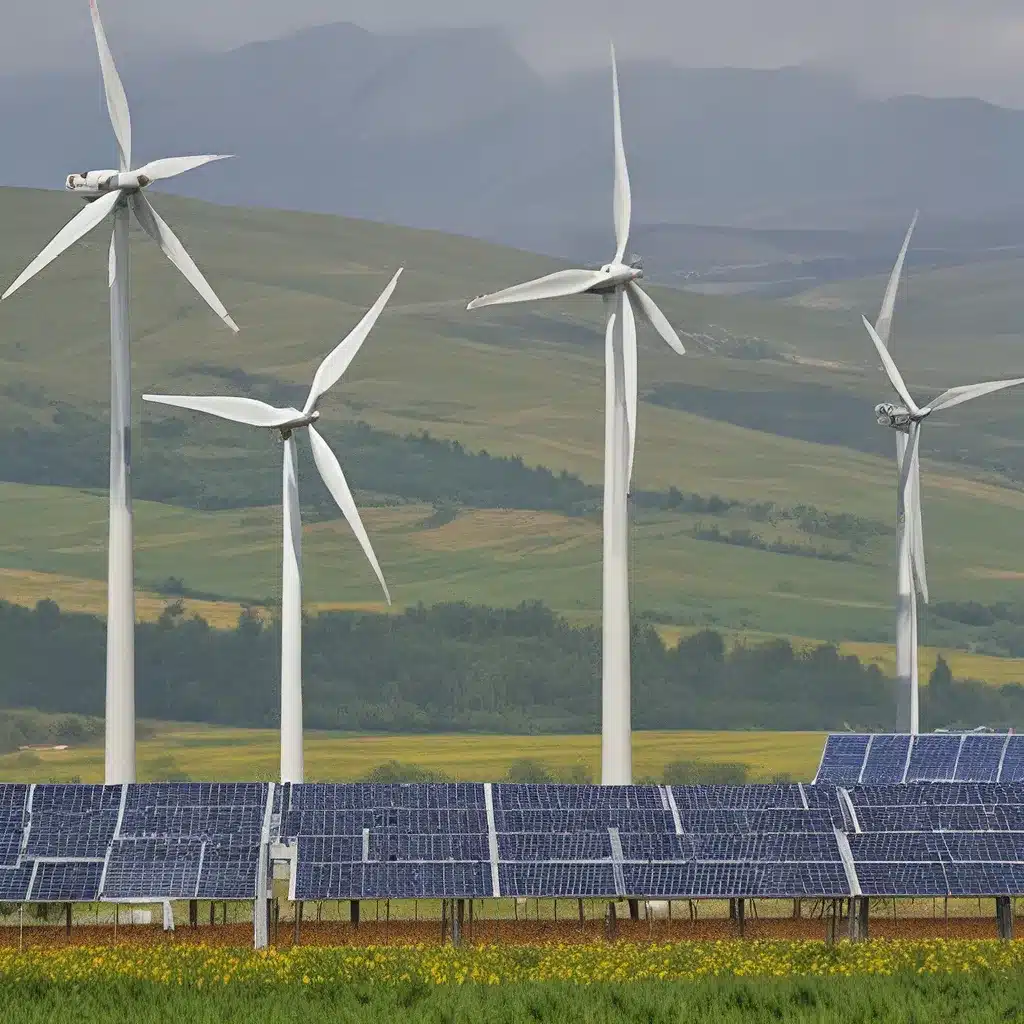
Ah, the world of renewable energy regulations – it’s like navigating a maze of legalese and policy minutiae, isn’t it? As someone deeply passionate about sustainable solutions, I’ve made it my mission to unravel the complexities of this ever-evolving landscape. Join me as we embark on a captivating journey, exploring the ins and outs of renewable energy regulations and how they shape the industry’s future.
The Patchwork of Policies
Let’s start with a fundamental fact: the world of renewable energy regulations is anything but straightforward. In fact, it’s more like a patchwork quilt, with a “patchwork of federal, state, and local policies and regulations” that can make your head spin.
But fear not, my friends, for this complexity also presents opportunities. You see, as the renewable energy industry continues to transform, with an “increasing portion of the power sector comprised of renewable energy resources”, the legal and regulatory environment is evolving in response. And that’s where the real magic happens.
Navigating the Regulatory Jungle
Now, I know what you’re thinking – how on earth do I make sense of all this? Well, let me tell you, the key is to have a “deep understanding of this developing legal landscape and related policies and economics”. And boy, do the folks at Barclay Damon have that in spades.
These legal eagles have “national experience” and a “unique insight into the business and operational side of the renewable energy industry, as well as the perspective of the relevant regulatory agencies”. In other words, they’ve got the inside scoop, and they’re not afraid to share it.
Renewable Energy Certificates (RECs)
One of the most critical elements of the renewable energy regulatory landscape is the concept of Renewable Energy Certificates (RECs). These “market-based instruments that represent the property rights to the environmental, social, and other non-power attributes of renewable electricity generation” are the backbone of many states’ Renewable Portfolio Standards (RPS).
Now, here’s where it gets interesting – many states have created “SREC markets to spur the development of solar” by requiring electricity suppliers to purchase these solar-specific RECs. This “solar-specific requirement to meet a portion of the RPS with solar resources is often referred to as a solar carve-out”.
The Importance of Interconnection
But RECs are just one piece of the puzzle. Interconnection standards are also a crucial factor when it comes to renewable energy development. These standards “define how a distributed generation system such as solar photovoltaics (PVs) can connect to the grid”. And let me tell you, the process can be a real beast.
In some areas, the “interconnection process lacks consistent parameters and procedures for connecting to the grid or is unnecessarily complex”. This can “drive up costs and cause delays, which can be significant barriers to project development”. So, understanding the interconnection policy landscape is paramount if you want your renewable energy project to take off.
Regulated vs. Deregulated Markets
And let’s not forget about the varying market structures that utilities operate under. Some states “allow market competition for retail energy supply to electricity customers”, while others feature “vertically integrated utilities that own or control the total flow of electricity from generation to meter”.
Navigating these “regulated and deregulated state-specific markets” is crucial for solar project developers. It allows them to “optimize their energy procurement strategy, anticipate their utility’s concerns, and design projects that emphasize mutual benefits”. After all, the last thing you want is to get caught off guard by a utility’s unique quirks.
The Hawaii Clean Energy Initiative
Now, if you really want to see the power of renewable energy regulations in action, just look at what’s happening in Hawaii. The “Hawaii Clean Energy Initiative (HCEI)” is a shining example of how a “framework of statutes and regulations supported by a diverse group of stakeholders” can drive real change.
This initiative has “transformed the financial, regulatory, legal, and institutional systems that govern energy planning and delivery within the state”, all with the goal of “achieving the nation’s first-ever 100 percent renewable portfolio standards (RPS) by the year 2045”. Now, that’s what I call ambitious!
The Evolving Landscape
As you can see, the world of renewable energy regulations is anything but static. It’s a constantly evolving landscape, with new policies, technologies, and market dynamics emerging all the time. And that’s what makes it so fascinating, isn’t it?
Sure, there may be “ongoing research and the possibility of evolving conclusions”, and “some experts believe” one thing while others believe another. But that’s the beauty of it – the renewable energy industry is a living, breathing organism, constantly adapting and growing.
The Future of Renewable Energy Regulations
So, what does the future hold for renewable energy regulations? Well, that’s the million-dollar question, isn’t it? One thing’s for sure – the “continued growth of the distributed solar market” is going to keep pushing the boundaries of what’s possible.
And as the industry continues to evolve, I have a feeling we’ll see even more innovative solutions and regulatory frameworks emerge. Who knows, maybe one day we’ll have a “100 percent clean energy” landscape that puts the fossil fuel era firmly in the rearview mirror.
But until then, it’s up to us – the renewable energy enthusiasts, the policy wonks, and the industry leaders – to stay on top of the ever-changing regulatory landscape. After all, “the initiative has grown stronger over the course of three gubernatorial administrations”, and it’s not showing any signs of slowing down.
So, let’s roll up our sleeves and dive into this “thriving industry” together, shall we? The future of renewable energy is ours to shape, and with a little “customized, targeted solutions grounded in industry knowledge”, I have no doubt we can navigate the “developing legal landscape” and make our mark on the world.
Firewinder is a leading provider of renewable energy solutions that can help you navigate the complex regulatory environment. Check out their website to learn more about how they can assist you in your renewable energy projects.

